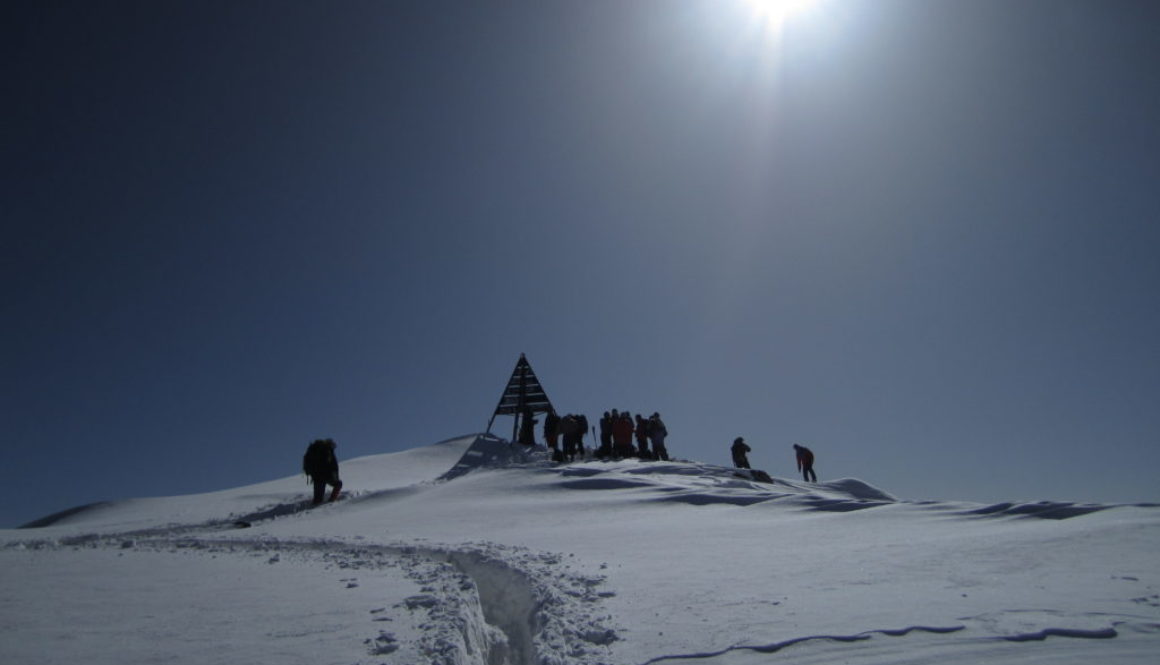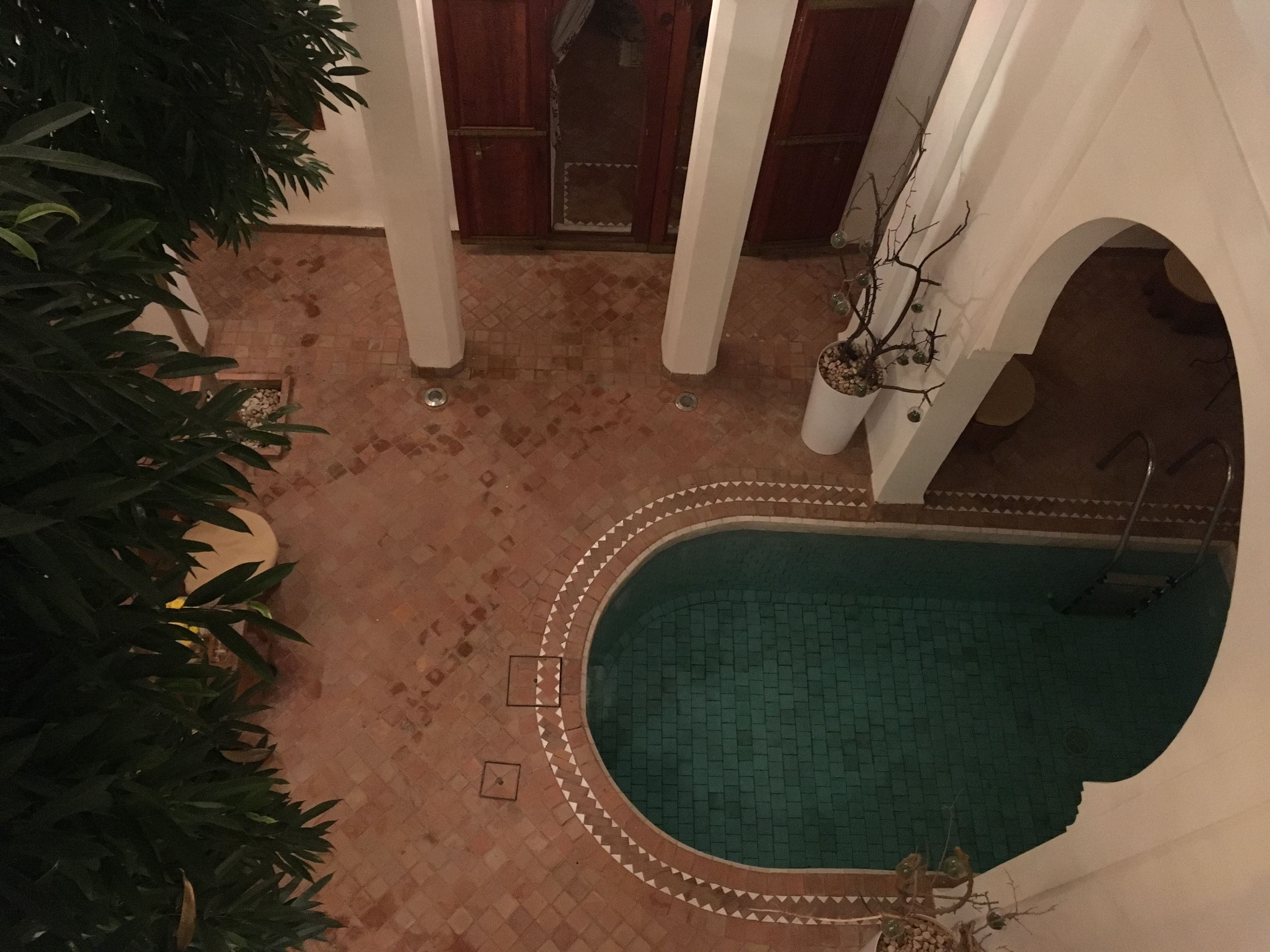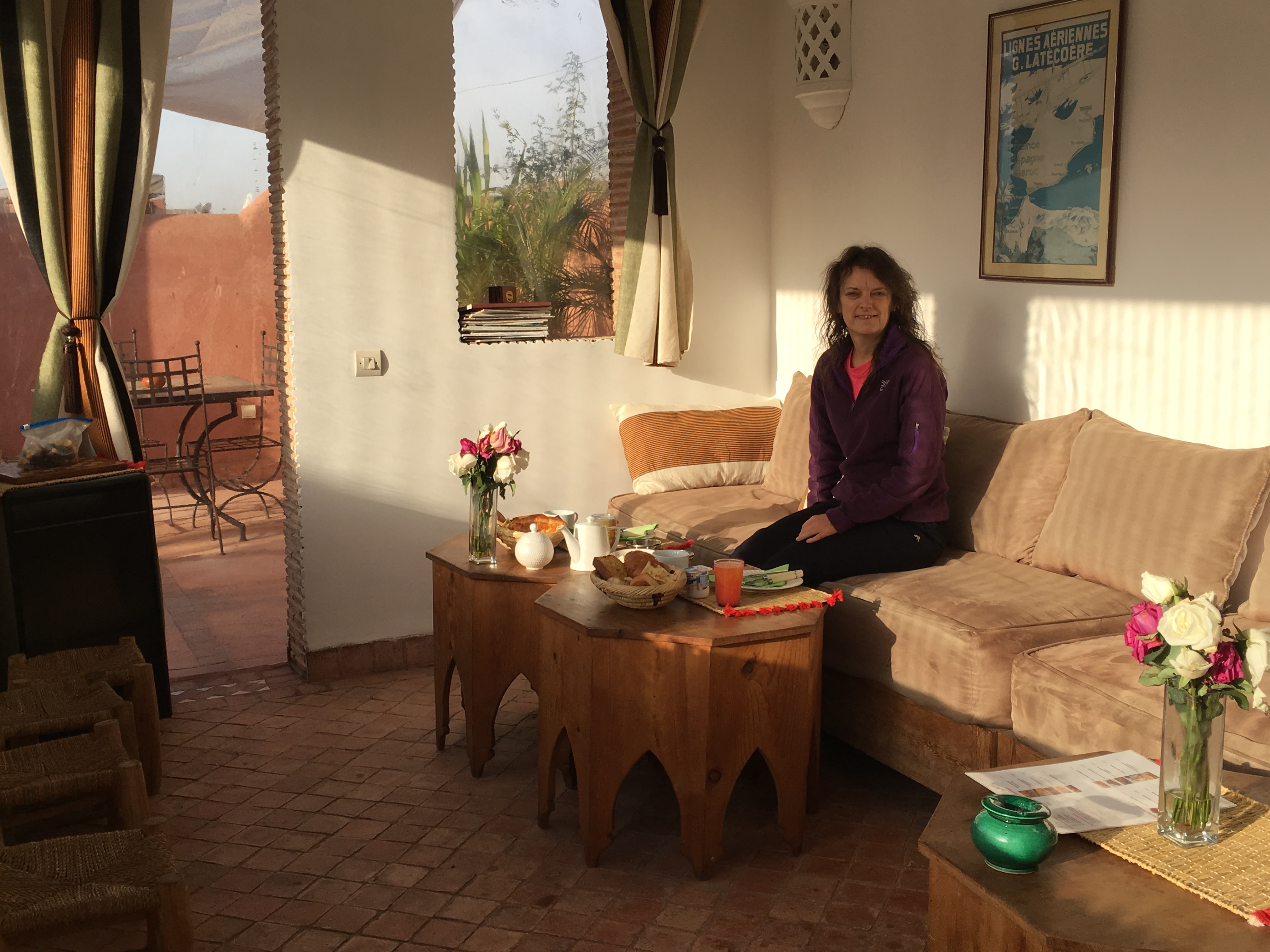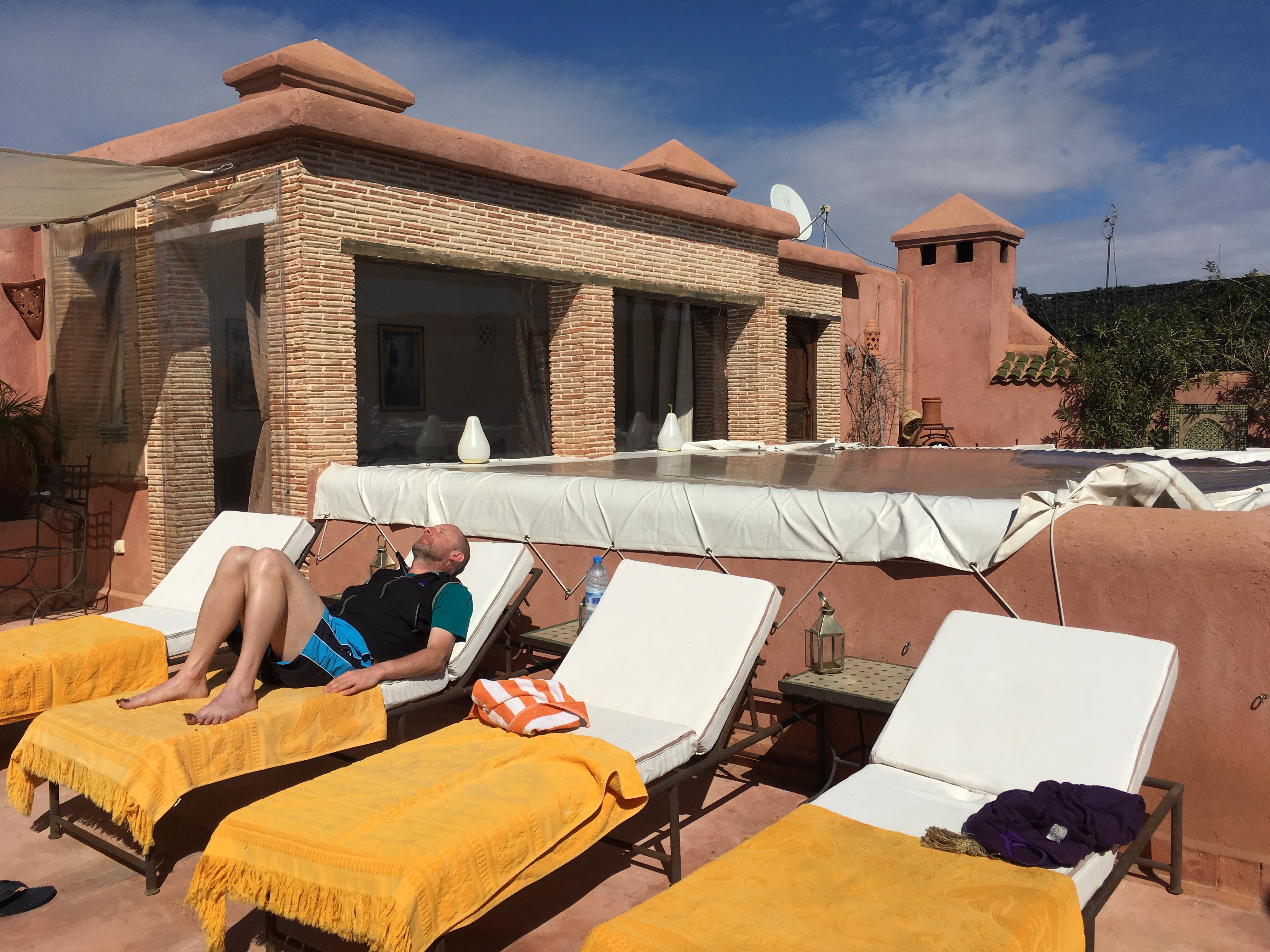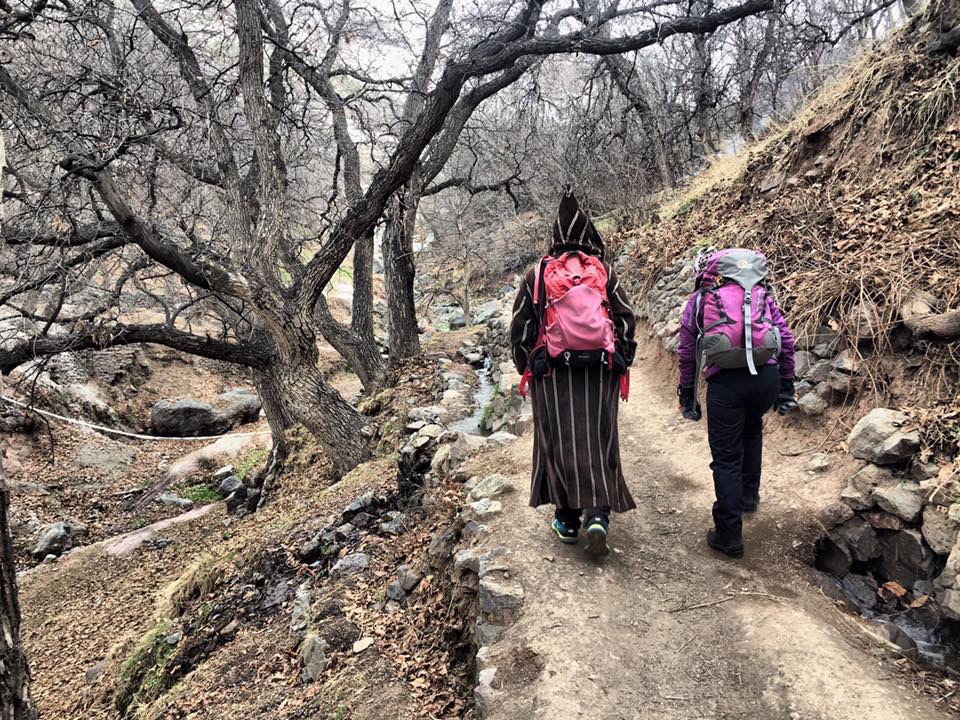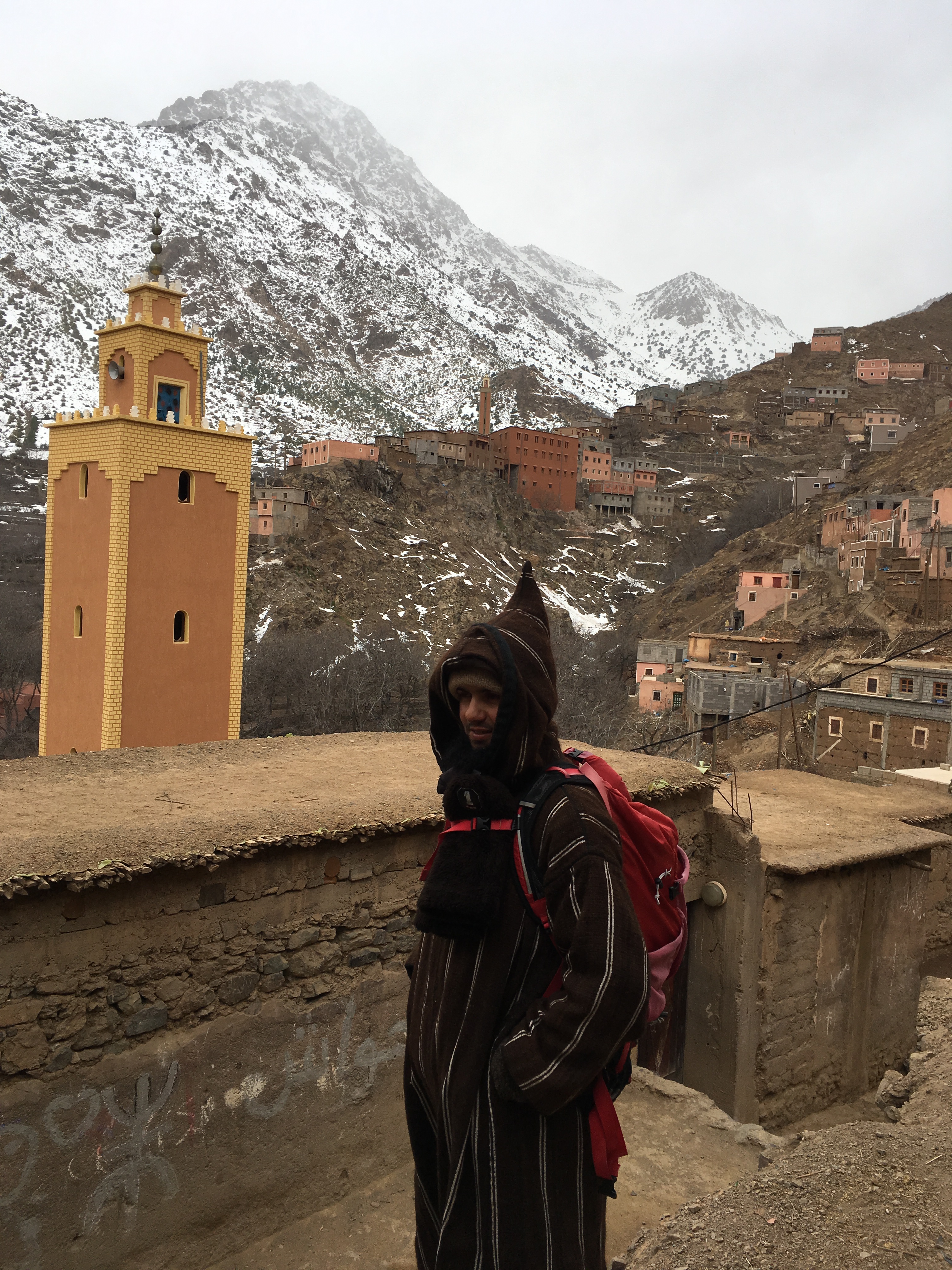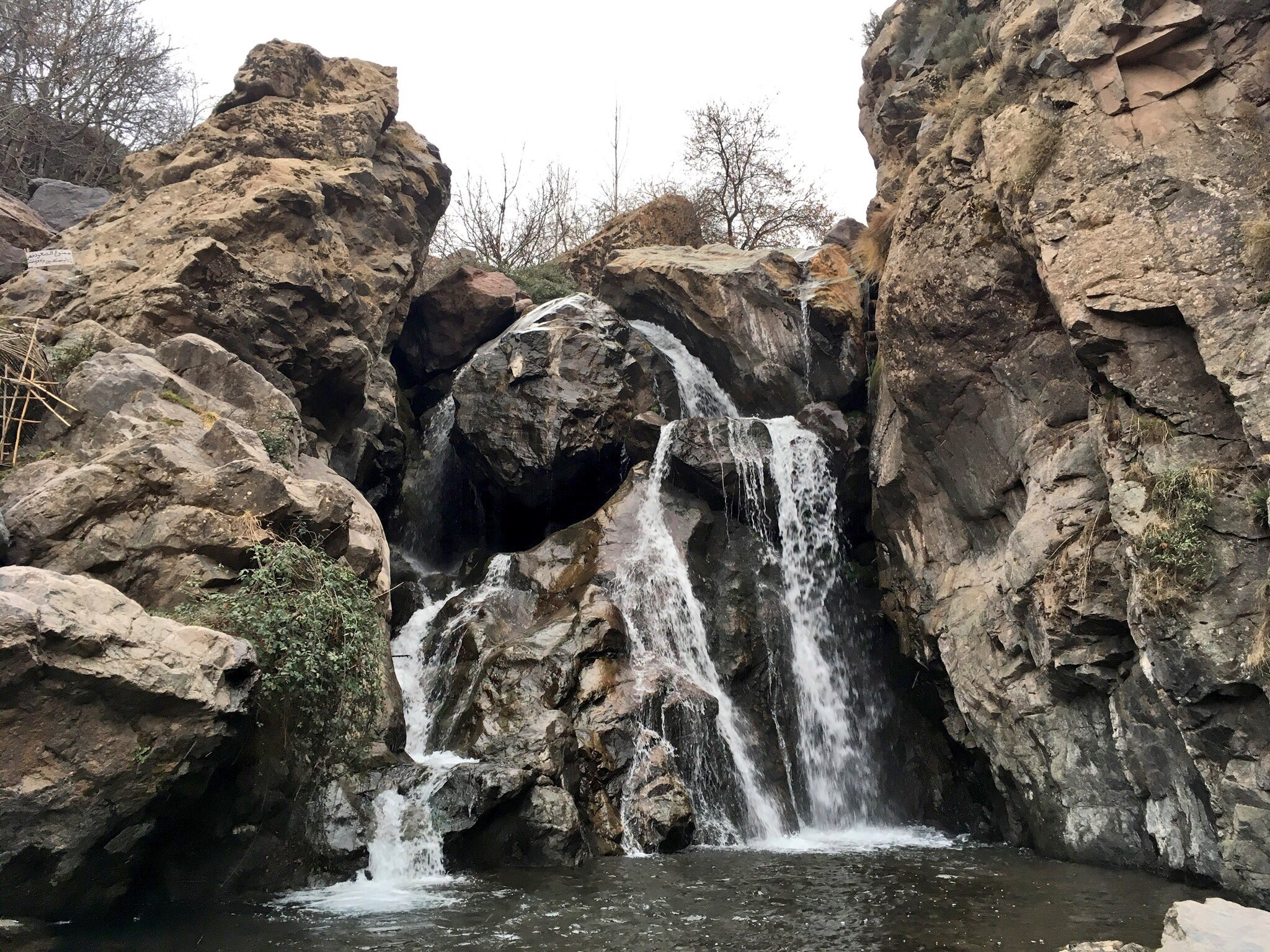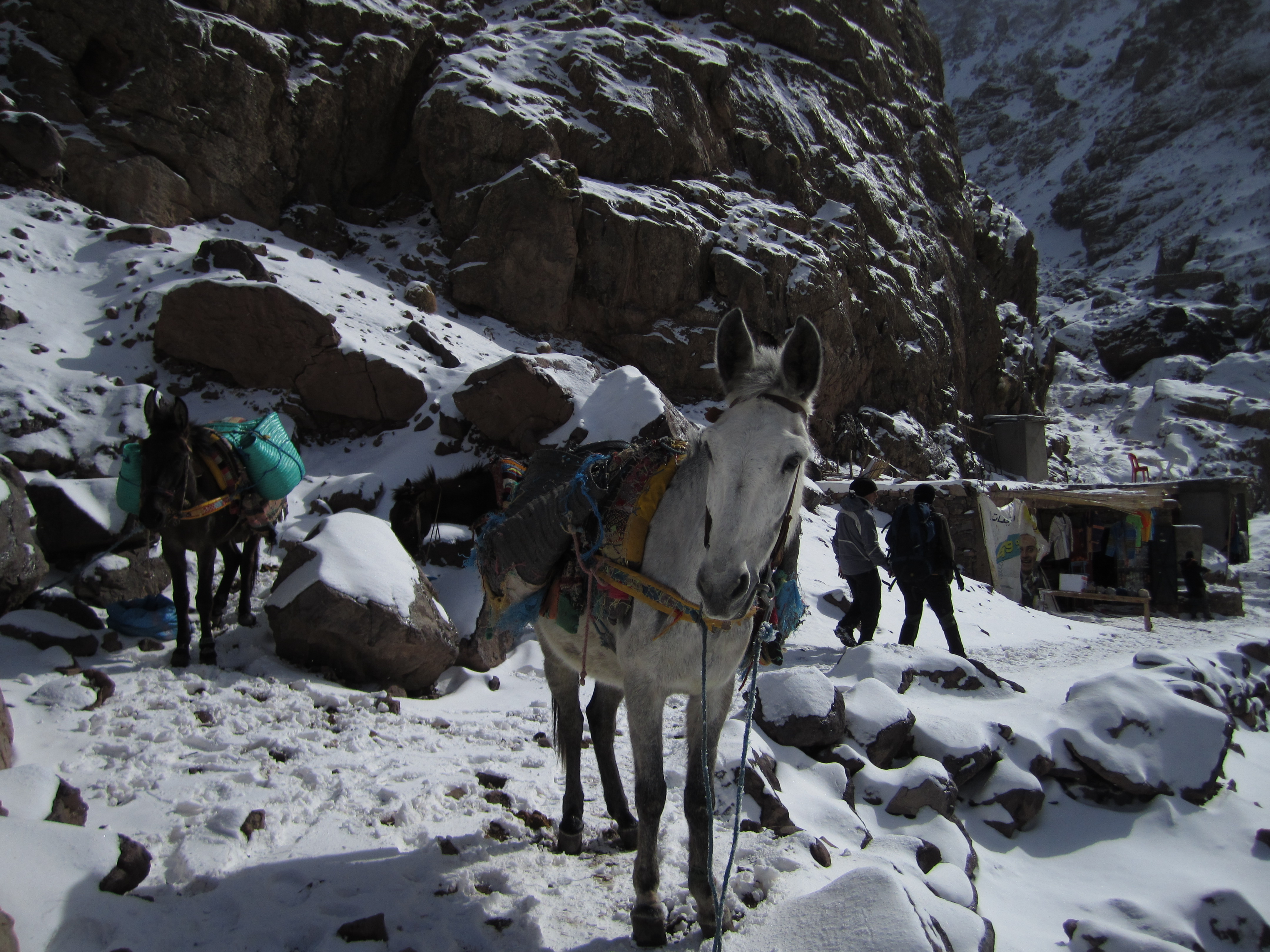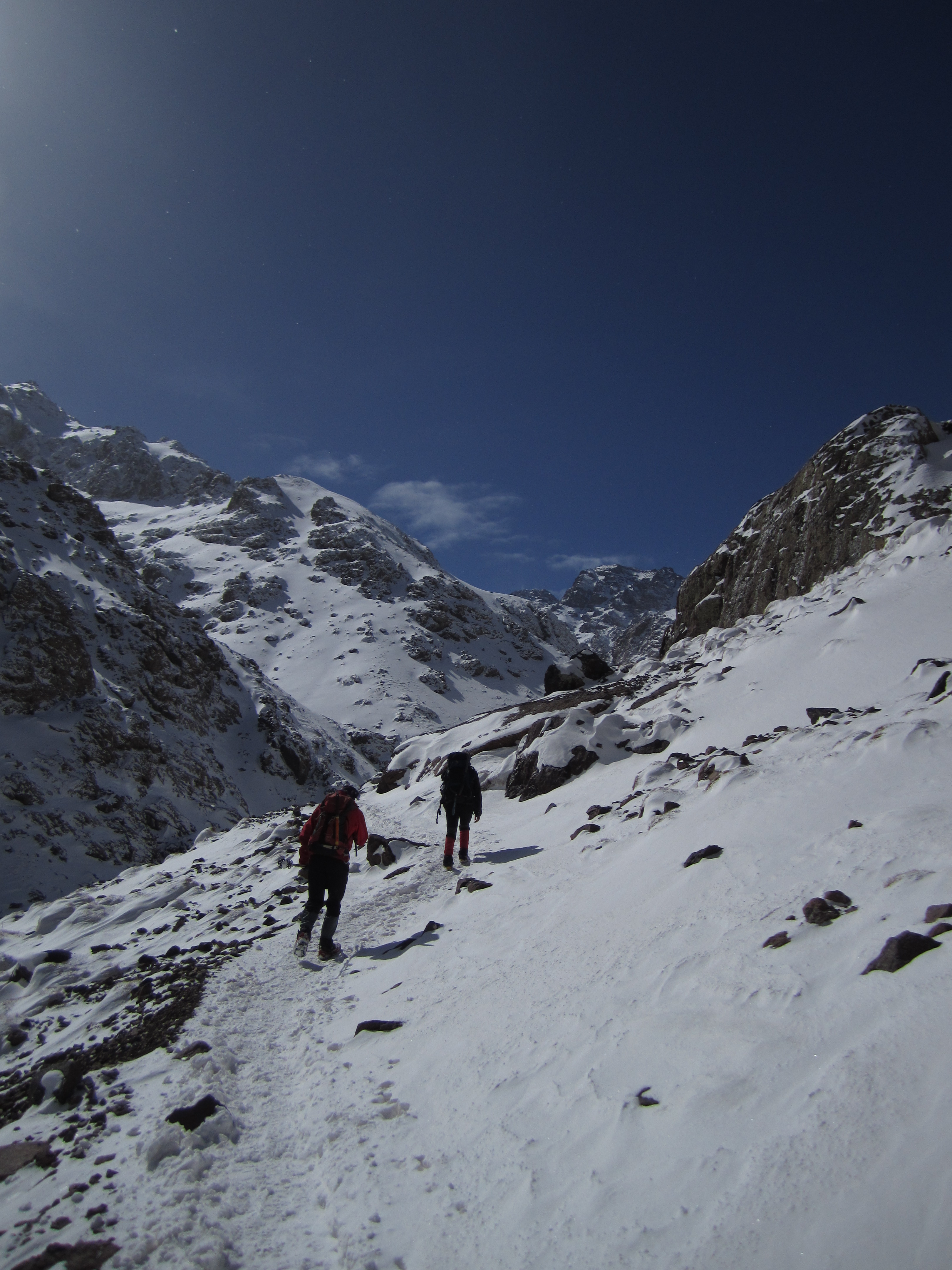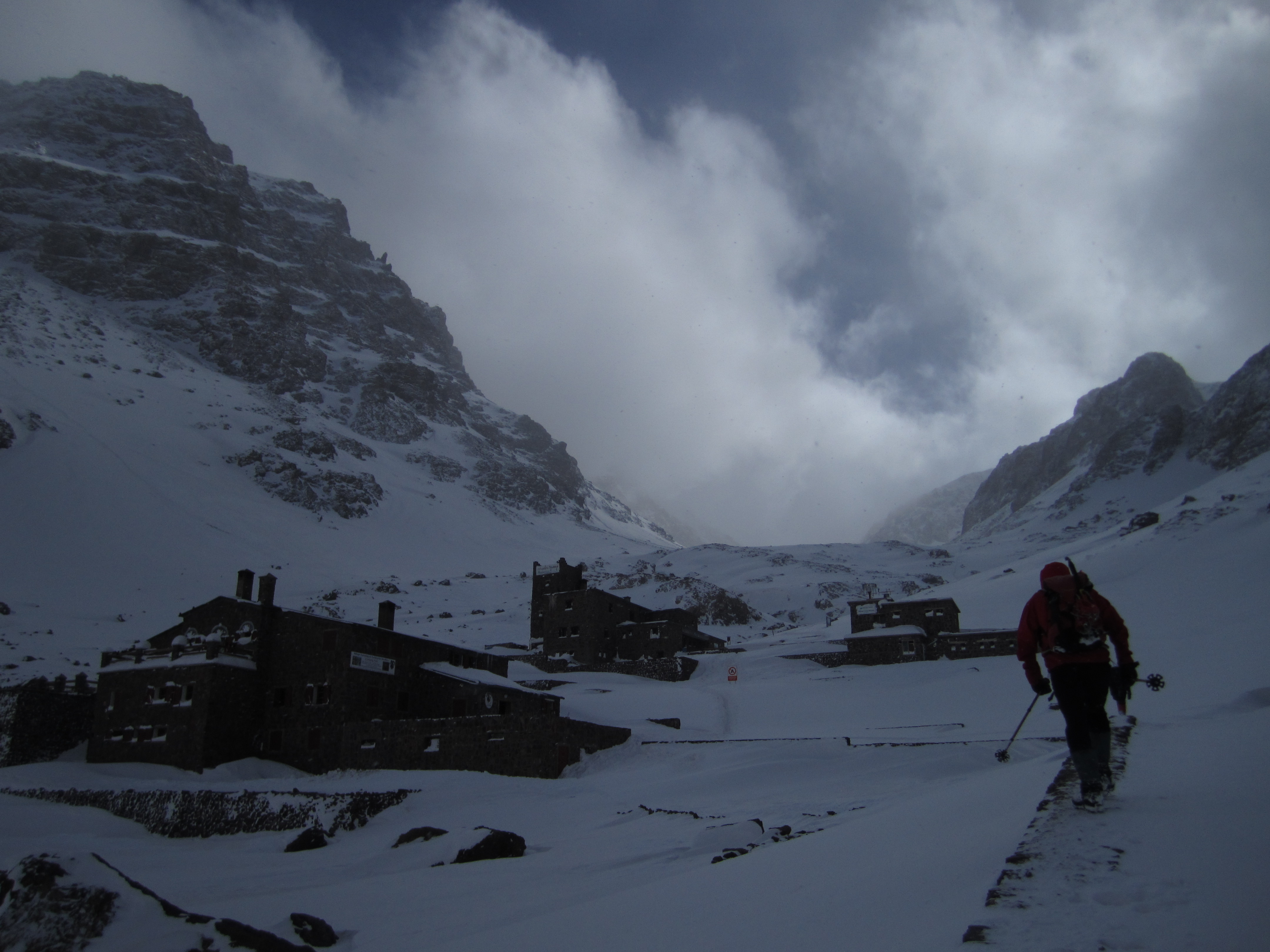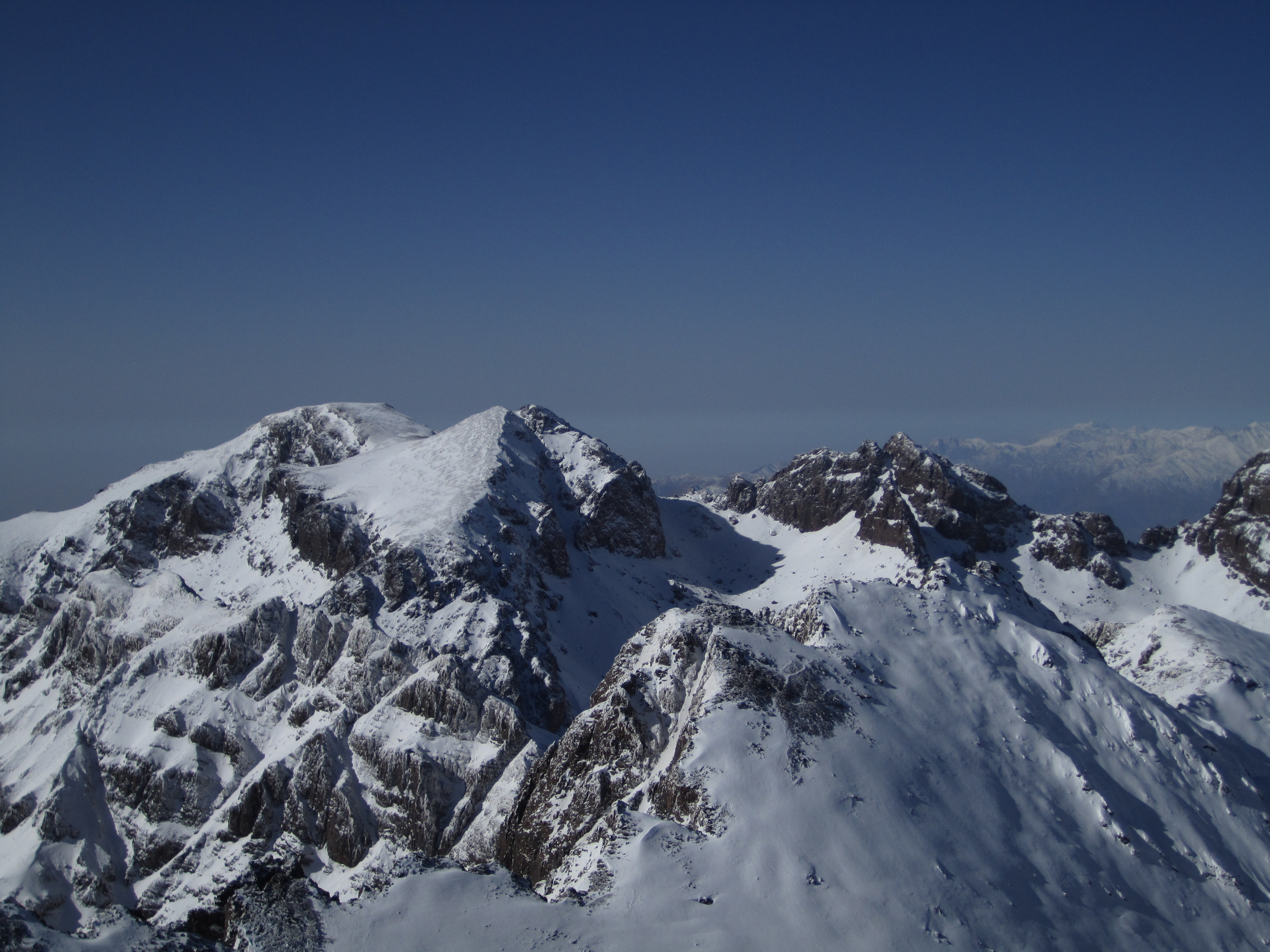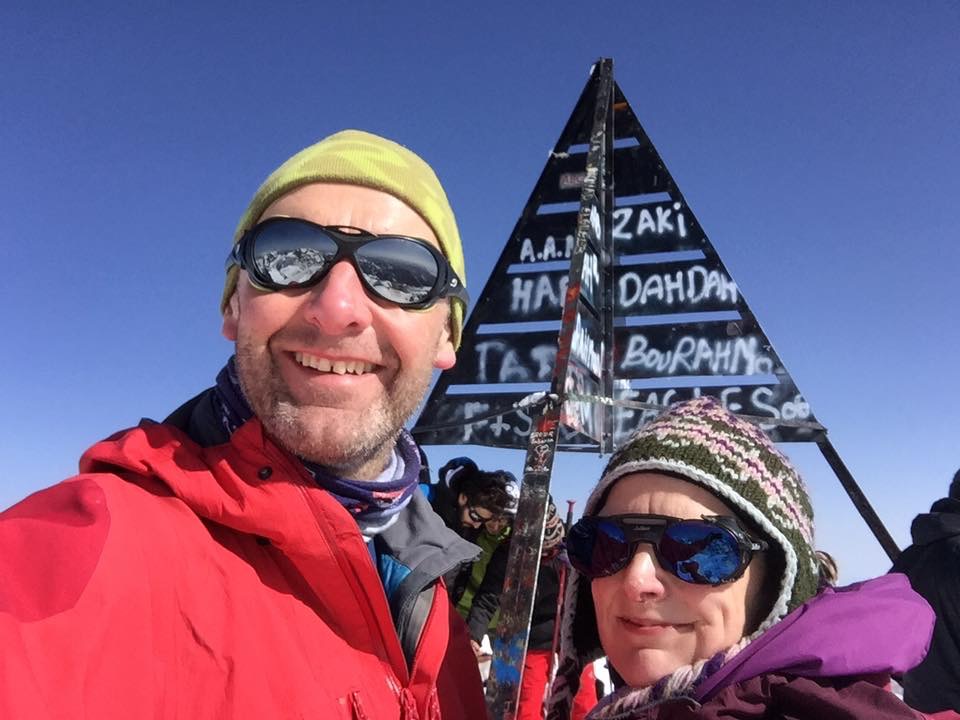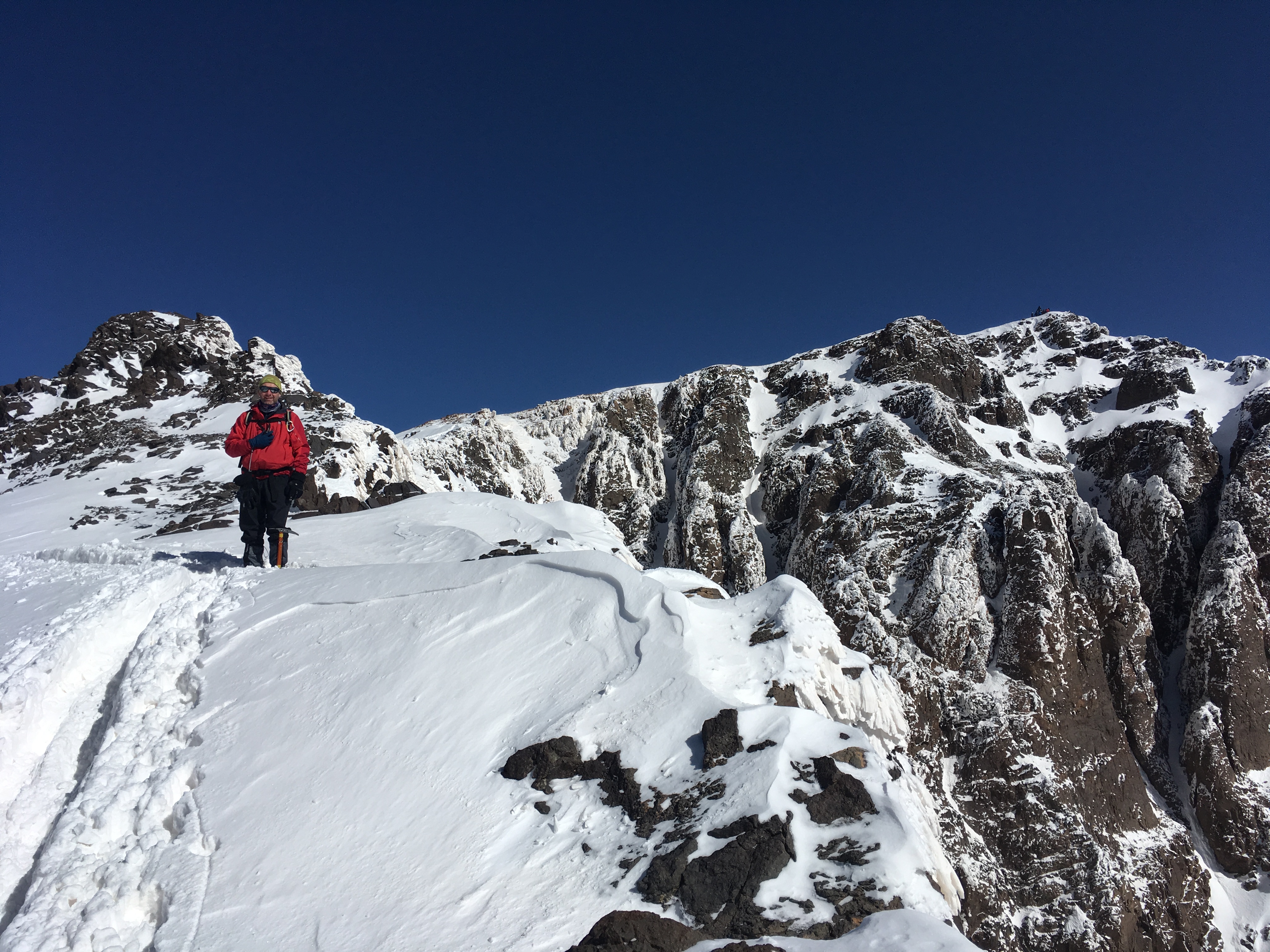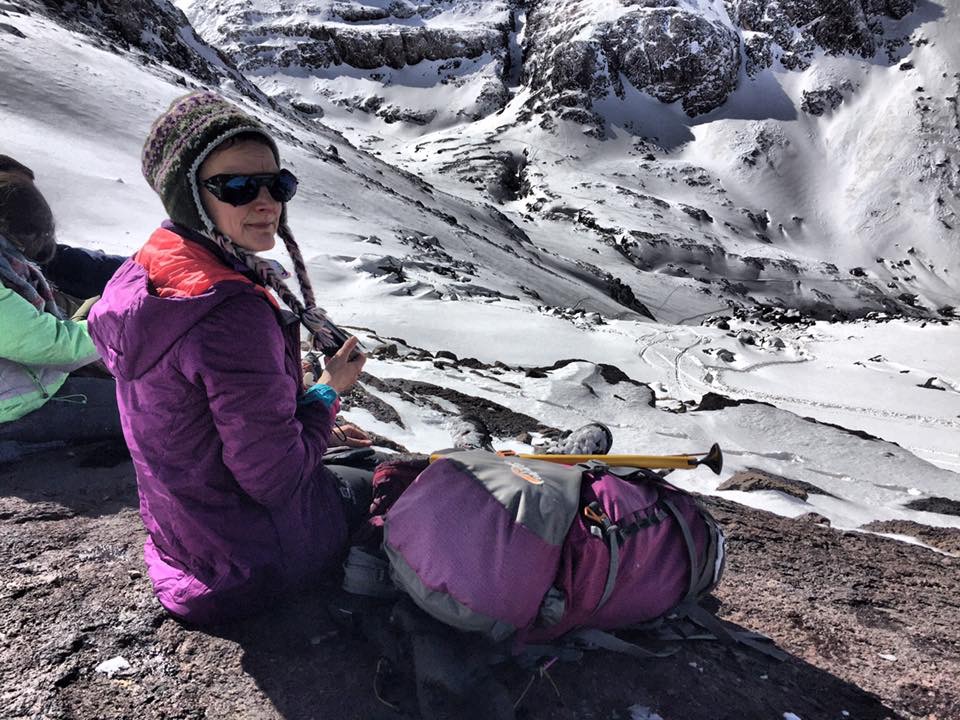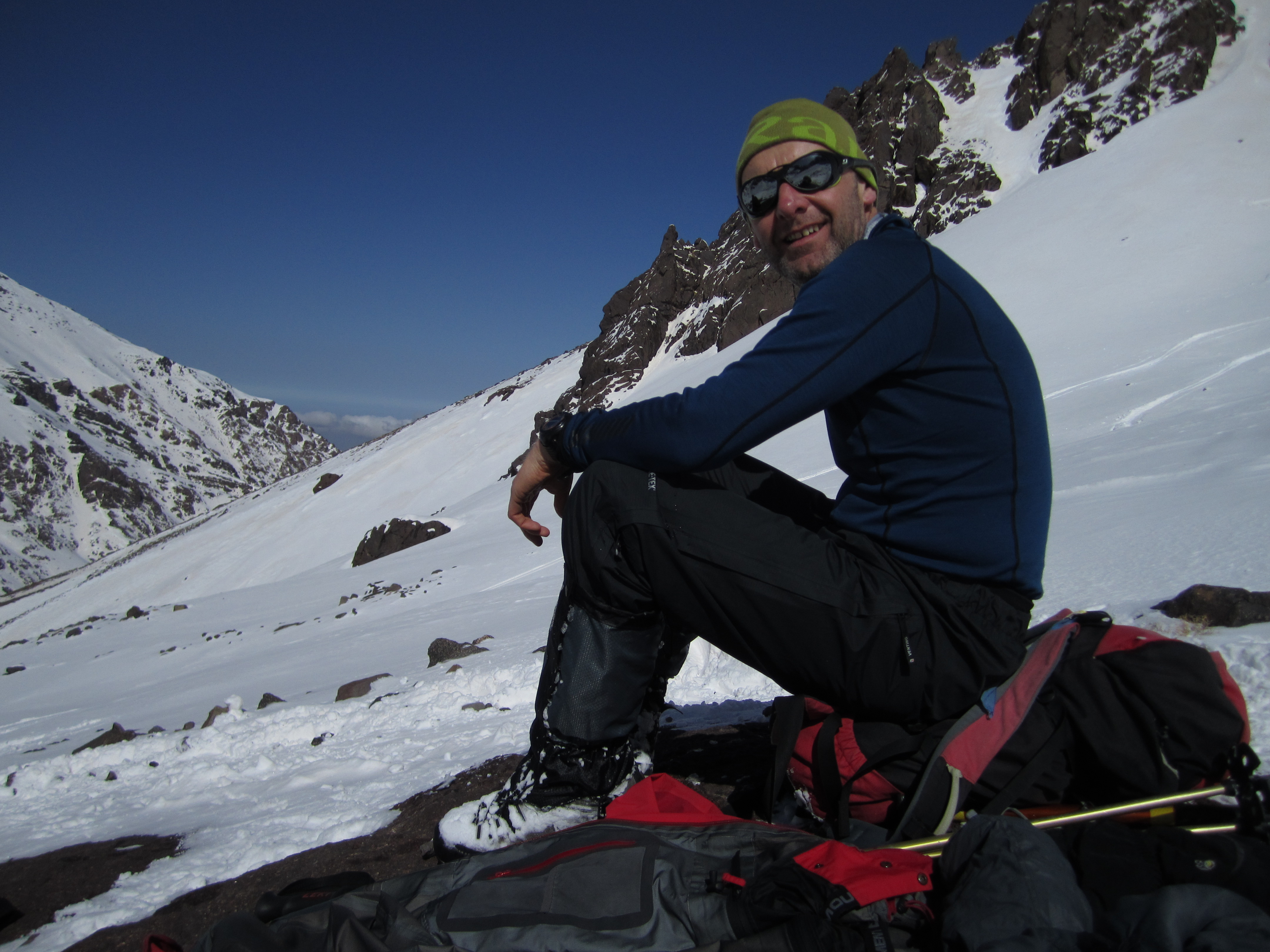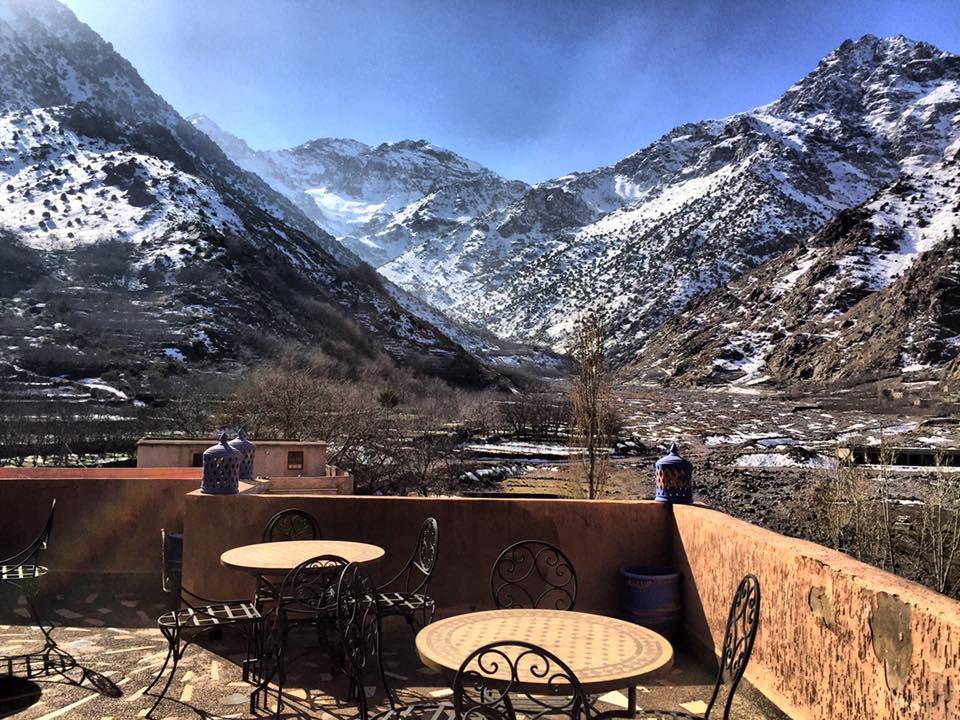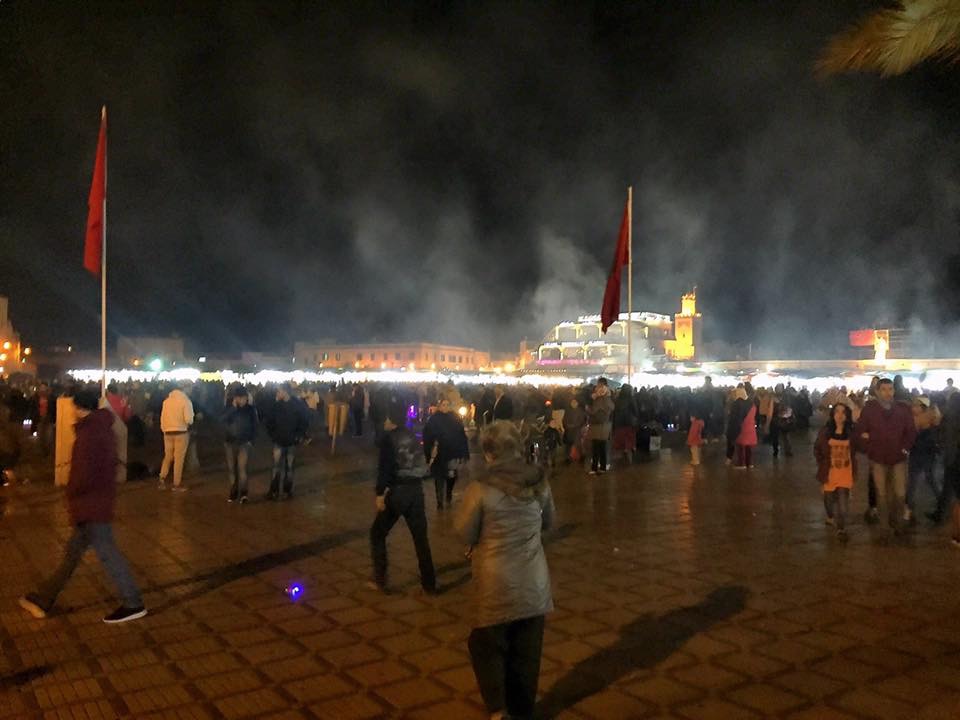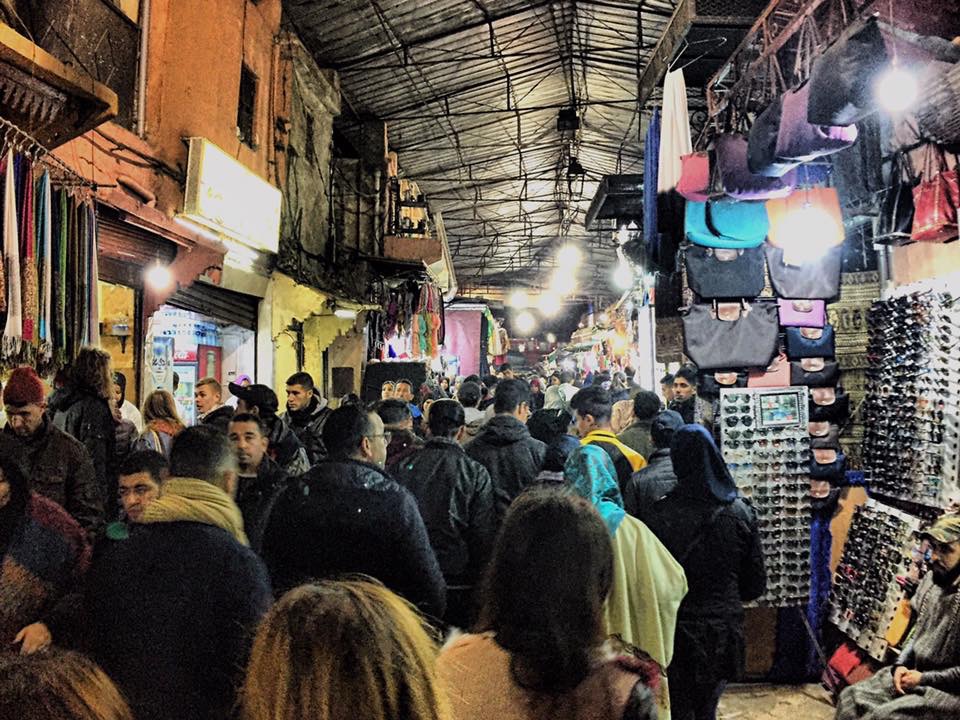Winter Ascent of Jebel Toubkal
We headed out to Morocco on a business trip in January primarily to add the final touches to our Mountains in Mind trek in April. But life would be dull if it was all work and no play, so what better way to have some fun than to take in a winter ascent of Morocco’s, and not only that, North Africa’s highest peak, Jebel Toubkal.
As the flight descended into Marrakech, the surrounding fields were like a patchwork quilt made up of different shapes, sizes and shades and surprisingly green for a country where temperatures in summer boast a boiling 45 degrees. Looking over the rooftops of the city, we could see the snow covered Atlas Mountains so tantalisingly close you could almost reach out to touch them.
It’s true what they say the city is red. The traditional buildings are made from local stone and covered in a red earthen mud, which gives them the rich colourful hue. In keeping with tradition, buildings in the new town follow suite and refreshingly, there are no high rise tower blocks. The tallest structures on the skyline are the enchanting towers of the mosques.
- Courtyard
- Garden room
- Roof terrace
We were staying in a small riad, a traditional Moroccan house built around a small central courtyard. It was tucked away down quiet, narrow alleyways about 20 minutes walk from the bustling main square, the Jemaa-el-Fna. Inside the medina it was like a labyrinth. There was limited access for cars and we were met by a man with a handcart to transport our luggage for the last five minutes of the journey to our accommodation. At the riad, we were made welcome and served a cup of mint tea before being shown to our room, which was spacious and comfortable. The following morning breakfast was served in the garden room on the roof terrace. A tranquil haven nestled above the rooftops of the busy city below with no hint of any noise apart from the relaxing tones of the babbling water feature.
We left the riad the following morning and arrived in Imlil for lunchtime. We met our guide, Lahassan, and had a short acclimatisation walk around the Imlil valley. The weather was dull and grey, and at times was snowing heavily. We traversed round the edge of the valley through walnut groves, apple trees and tiny Berber settlements to reach two waterfalls before returning back to our refuge for the evening meal.
- Lahassan wearing the traditional woollen coat
The weather forecast was thankfully looking brighter over the next few days so we were hopeful. No one had made it to the summit of Toubkal the preceding three days due to severe snow storms and strong winds. When we got up in the morning, it had snowed heavily overnight and everywhere was covered in a blanket of snow, but as the weather forecast had predicted, the sky was blue.
We met our muleteer and mule, who would be transporting our baggage and supplies up to the refuge and then set off steadily through the village before branching off up the valley. The path climbed steadily out of the village through walnut trees to the hillside village of Aremd. Leaving the village we followed the rocky path on the course of a dry river bed to begin with and then followed a broad path to reach the national park border. The path continued upwards to the hamlet of Sidi Chamharouch, where there is a muslim shrine, a large white painted rock although it was difficult to pick it out as it blended in so well with the snow. We had a short break here, a sandwich lunch accompanied by mint tea before continuing onwards.
The path climbed steeply out of the hamlet. The snow was compact underfoot so we were grateful for our microspikes that we’d put on over our boots. It then levelled out high above the river valley and the snow got deeper and softer so it was time to remove the spikes. The mountains up ahead were shrouded in mist and kept us guessing as to our objective the following day.
- Heading up the valley
- The refuges
Another brief stop at a small cafe, we were now in full sun so the temperature was warm. We continued to head up the valley and as we climbed higher, the snow got even deeper and was heavy going at times, but we had a good rhythmic pace. Then all of a sudden the refuges came into site nestled at the head of the valley. We made it in good time just as the sun dipped down behind the ridge and the temperature started to plummet.
We stopped in the lower Mouflon Refuge, where we unpacked and headed to the dining room for the warmth of the wood burner. A fresh pot of mint tea was waiting and soon after, we were served with a second lunc, a Moroccan omelette with vegetables and bread, followed by sliced oranges. Delicious! Three hours later and much to our surprise we were served dinner! A fantastic three course meal consisting of lentil soup, vegetable couscous, rounded off again with orange slices.
Early to bed, early to rise! We slept in one of the alpine style dormitories. The room was only half full and the temperature was decidedly chilly so we were grateful for the several blankets that are provided. Up with the larks, we headed out of the refuge at sunrise. Several groups had already left beforehand so, hopefully, they would blaze a trail through the fresh snow making it easier for us to follow.
With crampons on from start, the route weaved its way steeply up, across snow slopes and at times clambered up and over boulders. The snow was deep in most places but occasionally there were patches where the underlying scree and loose rock was poking through and scraped upon our crampons. The sun had yet to rise over the ridge so we were in the shade for most of the ascent to the coll at Tizi n’Toubkal, which kept the temperature low. We had a few quick food and drink stops to keep energy levels high and it showed how cold it was as the water in my bottle had started to ice up.
We turned left at the col and headed up the rocky ridge. The views were now breathtaking of the snow covered peaks all around the High Atlas. There was a steep snow slope our our left and a dramatic rocky corniced ridge to our right so care was needed on the exhilarating ascent. As the ridge broadened out, the angle lessened and a deep trail through the snow led us to the top.
A graffiti-ed pyramidal iron structure marks the summit and is on the very edge of steep cliffs. With cloudless blue skies and no wind, we couldn’t have asked for better winter conditions. The panorama was spectacular with views all around. In one direction, we could see Marrakech on the horizon, in the opposite direction the Sahara desert. In closer proximity, the snow covered mountains created a wonderful vista looking across to the twin peaked Jebel Ouanoukrim, Morocco’s second highest mountain. We took the ubiquitous summit photographs, had a bite to eat and chatted to fellow summiteers before heading back down.
It was ice axe out for the descent. Retracing our steps the way we came. I expected the ridge to be tricky on the descent but it was over in flash and was no cause for concern. The full sun was now overhead and was warming the snow up all around. The compact neve had softened and it was time to remove the crampons as they had no purchase in the soft snow. The ice axe was strapped to my rucksack and my trekking poles were pulled out of my bag to stabilise me on the descent. It was fun to say the least, slipping and sliding around sometimes dropping into holes in the soft snow. At least it was a soft landing! Skis would have been ideal and we were envious as we were overtaken by a couple on touring skis.
After a quick stop on some rocks, we continued to head on down the slope. Soon the refuge was back in sight and it wasn’t long before we arrived. The sun felt quite warm over head so we sat outside on the terrace with several others for five minutes until we cooled down. Inside it was time for a delicious lunch and the opportunity to chill out and dry any damp clothes in front of the warm fire.
We stayed overnight in a twin room as the dormitory had been reserved for a large group. We could see our breath as we clambered into our sleeping bags beneath both a quilt and blanket. Thankfully the nalgene bottle full of hot water made it very cozy and it didn’t take me long to doze off to sleep.
After breakfast the following morning, we departed the refuge. The snow had hardened overnight with the low temperatures so it was back on with the microspikes for the descent. The mules couldn’t come this high in the snow so our porter was carrying our main bag back down to Sidi Chamharouch. We had a good pace going, almost a trot and overtook many other parties on the descent. A quick stop in the hamlet for a toilet break and tea before continuing on the path back to Aremd.
- Aremd
- looking up to Toubkal
The temperature was warm in the sun and we had tea on a sun terrace before we were drove back down the track to the refuge in Imlil for lunch. Our team had Friday prayers so as we ate lunch, they went to the mosque. Following lunch, we were driven back to our riad in Marrakech.
After a few days in the mountains it was lovely to be back in the riad. Hot showers were welcomed and the chance to chill out for a few hours before we headed out for our evening meal. The temperature felt quite chilly in Marrakech and it was on with the down jacket to find a nice restaurant. We stumbled across a small, well presented restaurant down the little alleyways of the medina. It served pizza! So two veggie pizzas and we were happy!
- Jemaa-el-Fna
- In the souk
We had two days in Marrakech prior to our departure and spent a relaxing morning on the roof terrace of our riad, away from the hustle and bustle and a heavenly suntrap. The rest of the time we wandered around the souks in the medina, visited the Jemaa-el-Fna, had a tour of the tannery and met with our in-country partner finalising the details for the trip we are running in April. It was raining heavily when we left Marrakech in the early hours of Monday morning, much like when we left Liverpool the week before. What a perfect weather window we’d chosen and now I know why those fields surrounding Marrakech were so green!

